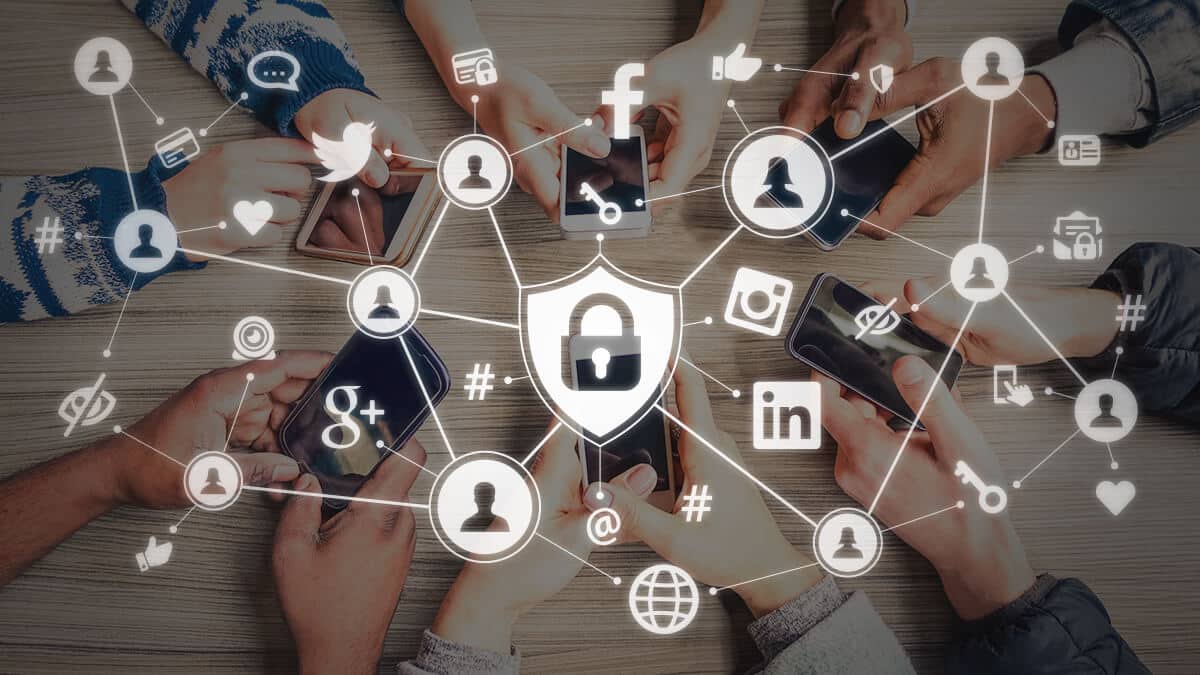|
|
By Veronica Maciag
It’s no secret that various, unexpected side effects have come with the evolution of social media for users—and the scale of social media users makes these particularly difficult to ignore. From the early 2010s to now, the number of social media users has risen from 970 million to over 4.7 billion. With this upwards spike, the user breakdown also reveals that teenagers now represent the most users, at about 90%. Yet, when considering the decade prior, this percentage was only around 60%.
Not only has the overall usage increased, but the age at which teenagers appear on social media has steadily decreased. Once late teenagers aged 14-17 dominated the platforms; but recently, documentation showed that the average age of users signing up to use social media platforms lowered to 12.3 years old. Though not inherently negative, this still poses a pertinent issue. One 2019 study followed 6,500 U.S. teenagers to discover that those who spent more than three hours a day using social media were at heightened risk for mental health problems. So, when considering the growth in teenage users as time progresses, it is clear how social media may quickly begin to cause more harm than good.
But, is it really as bad as it seems? Here are the implications.
How Teenagers Use Social Media, Then vs. Now
Frequenting social media was not always the norm, especially with younger audiences. Rather, the middle age and young adult populations began infiltrating the platforms, while the addition of the teenage population came later. Teenagers relied on cell phones for ‘split second’ communication—sending a quick text or calling their friends—rather than for holistic entertainment. For quick news, teens turn first to magazines or television.
 Now, everything is at our fingertips. The average social media user in 2023 engages with about 6.6 social media platforms on average. Taking this into perspective, that could include a mix of Twitter, Instagram, Snapchat, TikTok, YouTube, Facebook, and the occasional browsing of others. When considering these statistics, it is clear just how much the norms have changed, especially for the teenage majority now on social media.
Now, everything is at our fingertips. The average social media user in 2023 engages with about 6.6 social media platforms on average. Taking this into perspective, that could include a mix of Twitter, Instagram, Snapchat, TikTok, YouTube, Facebook, and the occasional browsing of others. When considering these statistics, it is clear just how much the norms have changed, especially for the teenage majority now on social media.
What Positive Effects Does Social Media Cause?
By spending time online, teens get unique opportunities to connect with people who they are unable to see day to day. Having the chance to Skype with friends and family abroad, or view their photos on platforms like Instagram or Facebook, provides an effortless way to stay updated. Though it may sound similar in benefit, it is distinct from texting or calling on the phone. In terms of video chatting, one can not only view the person but also do so abroad, unlike regular phone calls. Further, each person has the luxury of catering to their own free time rather than planning around their days, especially in terms of viewing photo updates.
 On a different note, social media can help build professional networks. Media platforms like LinkedIn allow for professionals to connect and promote career and internship opportunities. Forty percent of all internet users worldwide use social media for work purposes, representing approximately 1.8 billion teenagers online. As a whole, social media has been known to contain immense professional benefits to teenagers just starting in their careers.
On a different note, social media can help build professional networks. Media platforms like LinkedIn allow for professionals to connect and promote career and internship opportunities. Forty percent of all internet users worldwide use social media for work purposes, representing approximately 1.8 billion teenagers online. As a whole, social media has been known to contain immense professional benefits to teenagers just starting in their careers.
Finally, entertainment and self-expression are well-known factors that drive teens to use such platforms. Content creation, for instance on TikTok or YouTube, has become a prominent domain for teenage self-expression in video format. Each platform available has a specific niche to which one can cater their expression best, allowing for endless options for teenagers to choose from.
What Negative Effects Does Social Media Cause?
With an ever-increasing number of platforms to indulge in comes an increase of time one spends on social media. Previously, just 90 minutes (1.5 hours) a day were spent on social media worldwide. Now, that number has risen to two and a half or more hours, with teenagers’ average screen time rising from around 6 to now eight and a half hours per day. In effect, teenagers must make some sacrifices, one being a decrease in time spent outdoors. Research shows that teenagers now lack in-person interaction and physical exercise compared to earlier generations. Here, problems ranging from incorrect posture, headaches, and decreased social cues to even worse health conditions pose a threat.
Further, social media exposure also attributes to an increase in social comparison. Poor self-body image, diminishing self-confidence, and cyberbullying are all side effects of such. By increasing the opportunities for whom one can contact, there comes an increase in possible harmful words, ideas, and deeds. In effect, teenagers who spend 200+ minutes daily on social media are 2.8 times more likely to become depressed than those with under 120 minutes of daily use. Highlighting artificially-manufactured beauty standards leads to decreased self-worth and increased insecurities in teens.
Though these resources are meant to make us feel more connected, in a way, they also disconnect us. Increasing screen time and decreasing in-person connectivity have led to effects that far outweigh many of social media’s benefits. So, though social media is not all bad, its resulting mental and physical health threats are important to consider. Social media consumption in moderation would be most beneficial, especially for teenagers.
Resources for those Struggling with Mental Health –
Mental Health Emergency Hotline: Call 988
Substance Abuse and Mental Health Services Administration (SAMHSA): Call 1-800-662-HELP (4357)
National Suicide Prevention Lifeline: Call 1-800-273-TALK (8255)
Further Reading:
The Pew Research Center on the Evolution of Social Media and Technology Usage in Teens: https://www.pewresearch.org/internet/2022/08/10/teens-social-media-and-technology-2022/
A Basic Overview of Teens and Social Media
https://med.unr.edu/news/archive/2019/coppes-teens-and-social-media







